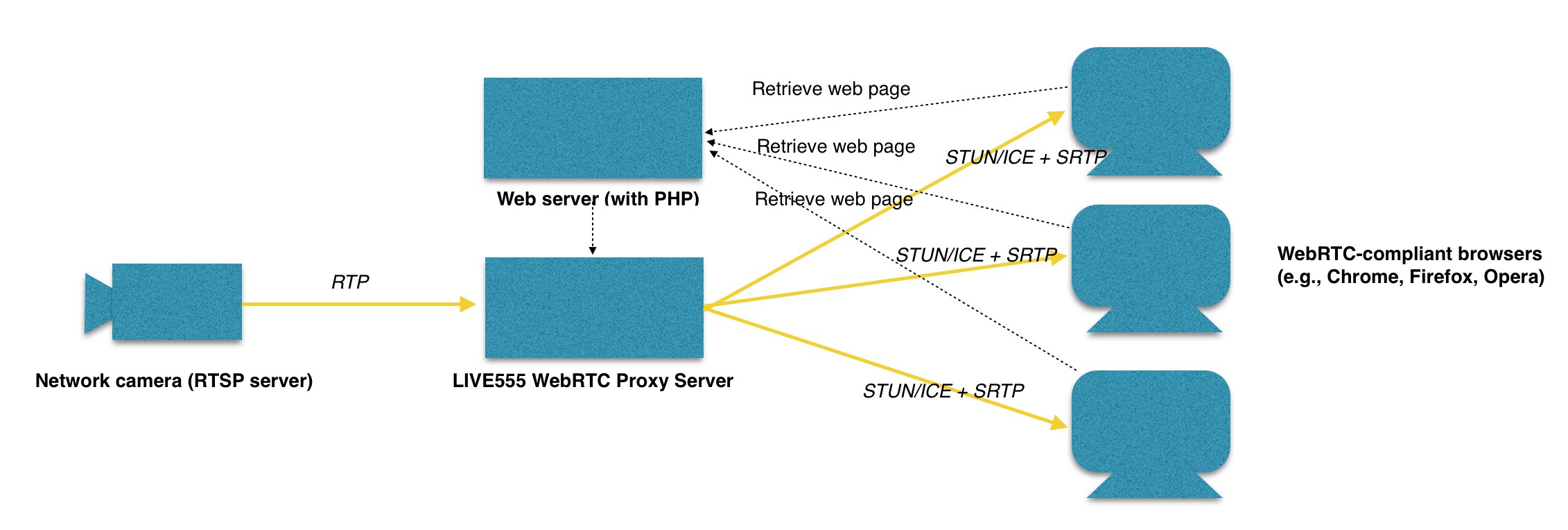

|
LIVE555TM WebRTC Demonstration |
The WebRTC video demonstration is currently offline. For alternative technology for viewing a RTSP stream from within a web browser, please note instead the "LIVE555 HLS Proxy" application.
 |
Network layout |
The "LIVE555 WebRTC Server" acts as a proxy for a 'back-end' RTSP stream (a network camera, delivering a H.264, MPEG-4, or JPEG video stream). The server transcodes the video stream into a 100kbps VP8 video stream, and delivers this VP8 video stream to one or more 'front-end' clients.
Unlike the "LIVE555 Proxy Server" however, the "LIVE555 WebRTC Server's" front-end clients are not RTSP clients, but web browsers - using the "WebRTC" standard (part of HTML5). WebRTC allows compliant browsers (including Chrome and Opera) to receive real-time audio/video streams, without requiring a 'plugin'.
The VP8 video stream is delivered to each 'front-end' client web browser using SRTP (i.e., encrypted RTP/RTCP, which is mandated for WebRTC). The "LIVE555 WebRTC Server" - along with each web browser - uses the IETF-standard STUN and ICE protocols to traverse any NATs that may be present between the server and browser.
The web browsers initiate the stream by loading a web page from a regular (PHP-enhanced) web server. The web page contains Javascript code that (i) asks the web server to contact the "LIVE555 WebRTC Server" to start streaming to this new browser client, and (ii) tells the browser to start receiving the WebRTC video stream.
"LIVE555" and the Live Networks logo are trademarks of Live Networks, Inc.